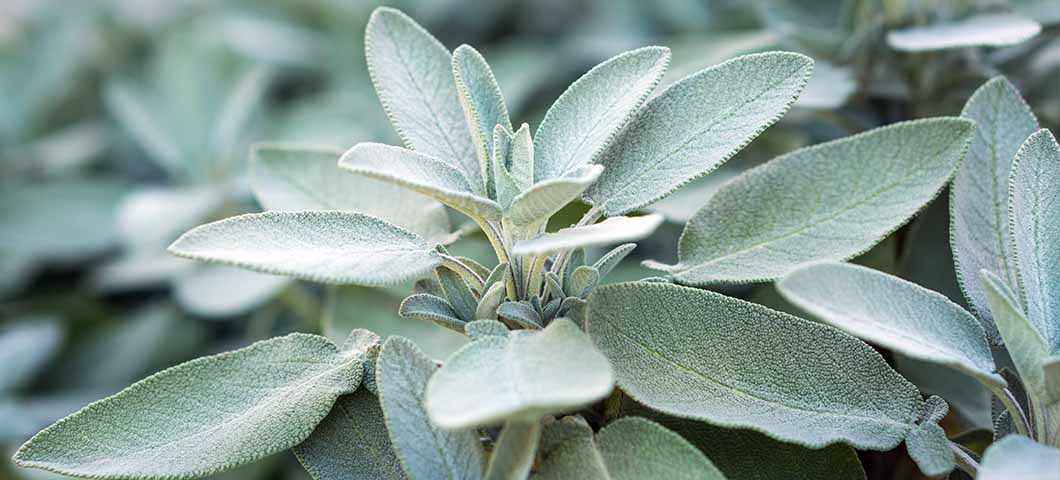Background
Sage (Salvia officinalis L.) is a woody perennial shrub belonging to the mint family. The plant is adapted to dry conditions and prefers well-drained, neutral soil. Sage tolerates cold winters and is suitable for cultivation in Montana.
Sage can be used as a whole spice, and an essential oil can be distilled from the plant. Dalmatian sage, from S. officinalis, is considered to be superior for oil production. Spanish sage (S. lavandulaefolia) and Greek sage (S. triloba) are of inferior quality (1). Oil quality is determined primarily by thujone content, with camphor, linalool, 1,8-cineole, cis-ocimene, sabinyl acetate and borneol also present (2).
Research Summary
Sage ‘Extrakta’ (Johnny's Selected Seeds, Albion, ME) was sown in the greenhouse on April 13, 1998, and planted in the field on May 13 at the Western Agricultural Research Center, Corvallis, MT. Six- row plots were 8 ft long with rows 18" apart and 12" between plants, with four replications. No harvest was done the first year. The top 2/3 of the plant was harvested when in full flower on June 22, 1999 and again on August 17, 1999. Border rows were not included. Plants were air-dried and the entire top distilled.
|
Harvest Date
|
Dry weight (lb/a)
|
Leaf (lb/a)
|
Oil (lb/a)
|
|---|---|---|---|
|
Jun. 22
|
1,956
|
1,049
|
13.0
|
|
Aug. 17
|
2,101
|
1,494
|
23.8
|
|
Total
|
4,057
|
2,542
|
36.8
|
Discussion
Sage was productive at WARC, whether harvested for leaf or for oil. Many types of sage are available, and choice of cultivar depends on the intended use. The 'Extrakta' cultivar was developed for oil distillation, while nonflowering types are desirable for leaf harvest. Plants are normally harvested for oil at full bloom, and for leaf before bloom.
Acknowledgments
Seed was donated by Johnny's Selected Seeds, Albion, ME.
References
- Guenther, E. 1948. The Essential Oils. Robert E. Krieger Pub. Co., Inc.
- Chalchat, J., A. Michet, and B. Pasquier. 1998. Study of clones of Salvia officinalis L. Yields and chemical composition of essential oil. Flavour and Fragrance J. 13:68-70.
- Hornok, L. 1992. Cultivation and Processing of Medicinal Plants. John Wiley and Sons, New York.
- Simon, J., A. Chadwick and L. Craker. 1984. Herbs: An Indexed Bibliography. 1971-1980. The Scientific Literature on Selected Herbs, and Aromatic and Medicinal Plants of the Temperate Zone . Archon Books, 770 pp., Hamden , CT.


